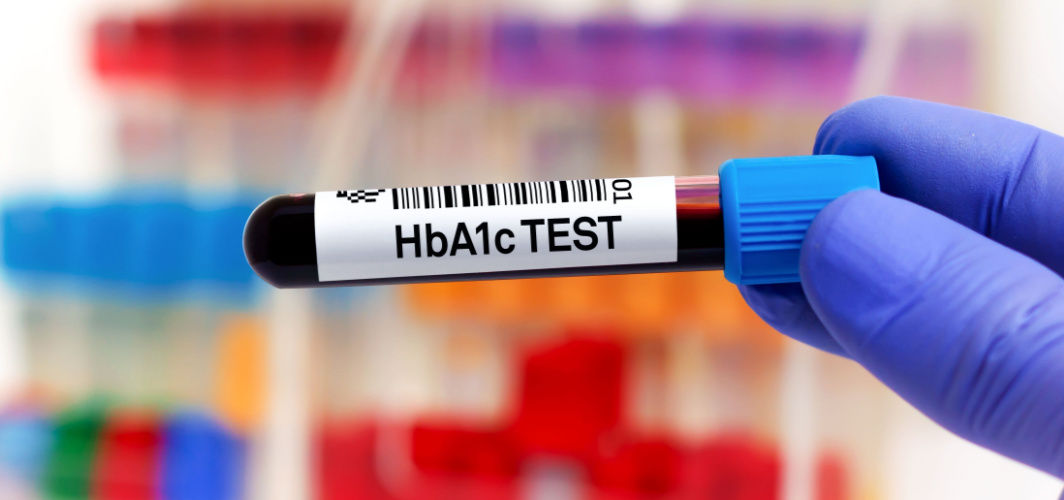Diabetes Management
How To Bring Down The HbA1c Level?
4 min read
By Apollo 24|7, Published on - 17 January 2023, Updated on - 05 September 2023
Share this article
0
5 likes

Rather than getting fasting and post-meal blood sugar levels checked, nowadays doctors often prescribe the HbA1c test. The HbA1c blood test primarily evaluates the three-month average blood sugar level of an individual. However, it can also be used to diagnose diabetes mellitus and assess a patient's glycaemic control if they already have been diagnosed. Keeping your HbA1c level within the normal range is the best way to prevent diabetes-related complications.
How do HbA1c levels determine sugar levels in the blood?
Haemoglobin in your red blood cells binds to glucose present in your blood. The HbA1c blood test calculates the amount of glucose bound to the haemoglobin. Since red blood cells typically have a lifespan of about three months, the test shows the average blood glucose level over the previous three months. If your blood glucose levels have been high over the past few weeks, your HbA1c test results will also be higher than normal.
What is the normal HbA1c level?
Normal HbA1c values range between 4% and 5.6% for people without diabetes. You have pre-diabetes and a higher likelihood of developing diabetes if your HbA1c levels lie between 5.7% to 6.4%. Diabetes is diagnosed when levels reach 6.5% or higher.
How To Lower hba1c Levels?
In diabetic patients, lower HbA1c values signify effective blood sugar management. However, people with high or borderline HbA1c levels may wonder how can they bring their HbA1c levels down. Here are a few lifestyle changes and treatment plans that may help you keep your HbA1c levels in the normal range:
- Plan a diet with low glycaemic index foods such as green vegetables, raw carrots, beans, chickpeas and lentils to regulate blood glucose levels.
- Be mindful of the portion sizes of the food.
- Start a good exercise regime to manage weight.
- Eat a fibre-rich diet to control sugar spikes.
- Take your oral hypoglycaemic medications as prescribed.
- Track your blood glucose levels with a glucometer at home.
- Consult your doctor regularly and get your lab tests done for HbA1c as and when prescribed by your doctor.
Regulating your HbA1c level is key to successful diabetes management. Making certain lifestyle changes, such as eating a balanced diet, especially low glycaemic foods, exercising, and taking medications regularly can help to effectively control HbA1c levels. If you are diabetic, make sure to consult a doctor and a nutritionist before making any changes to your diet and exercise routine.
FAQs
1. Is the HbA1c test better than other glucose tests?
Yes, HbA1c levels give a better picture of blood glucose control over three months, unlike other blood glucose tests which only provide a one-time status of sugar level in the body.
2. Which foods reduce HbA1c?
A diet devoid of refined carbohydrates and rich in protein, healthy fats, whole grains and fibre can have a positive effect on HbA1c levels.
3. What is the HbA1c test price?
The HbA1c test price varies among different laboratories across different regions. Usually, the test price ranges between INR 300 and INR 1000 across different states in India.
4. How many times do you have to take an HbA1C blood test?
For a healthy or pre-diabetic person, taking the HbA1c blood test twice a year is sufficient. However, if you are diabetic taking the test quarterly or 4 times a year is recommended.
5. How to bring HbA1c down?
HbA1c levels can be brought down by following a strict diabetes-friendly regimen that includes cutting down on sugary foods, exercising regularly, and taking prescribed medications regularly.
Talk to a doctor to get the best guidance.
Consult An Apollo Diabetologist
You can also manage your diabetes like a pro with Apollo 24|7's 12-week empower programme.
Medically reviewed by Dr Sonia Bhatt.
Diabetes Management
Leave Comment
Recommended for you

Diabetes Management
Can Regular Exercise Help Beat Gestational Diabetes?
Gestational diabetes can be managed successfully with early detection and lifestyle changes. Women diagnosed with gestational diabetes must eat a healthy diet, stay physically active, regularly monitor blood glucose levels and follow their medications to manage gestational diabetes. They can also consult a dietitian for a balanced meal plan. Medications like metformin may be prescribed by doctors if needed.

Diabetes Management
Are You at Risk for Diabetes? This Simple Test Can Tell
The HbA1c test, also known as the haemoglobin A1c test, is a blood test that measures the average blood glucose levels over the past two to three months. It is used to diagnose and monitor prediabetes and diabetes.The test does not require fasting or any other special preparation. It is important to interpret the results in consultation with a healthcare professional.

Diabetes Management
The Best Time to Exercise in Diabetes
Exercise plays a crucial role in diabetes management, benefiting both Type 1 and Type 2 diabetes individuals. The timing of exercise matters as well. For Type 2 diabetes, morning workouts should be preceded by a small meal to prevent blood glucose spikes. Conversely, people with Type 1 diabetes are advised to exercise in the morning to avoid later-day hypoglycemia. High-intensity interval training post-lunch suits Type 2 diabetes, while late evening exercise can affect people with Type 1 diabetes, mitigated with insulin adjustments. Consulting healthcare professionals for a personalised exercise plan is crucial for effective diabetes management.
Subscribe
Sign up for our free Health Library Daily Newsletter
Get doctor-approved health tips, news, and more.
Visual Stories

8 Fruits That are Incredibly Healthy for Diabetes
Tap to continue exploring
Recommended for you

Diabetes Management
Can Regular Exercise Help Beat Gestational Diabetes?
Gestational diabetes can be managed successfully with early detection and lifestyle changes. Women diagnosed with gestational diabetes must eat a healthy diet, stay physically active, regularly monitor blood glucose levels and follow their medications to manage gestational diabetes. They can also consult a dietitian for a balanced meal plan. Medications like metformin may be prescribed by doctors if needed.

Diabetes Management
Are You at Risk for Diabetes? This Simple Test Can Tell
The HbA1c test, also known as the haemoglobin A1c test, is a blood test that measures the average blood glucose levels over the past two to three months. It is used to diagnose and monitor prediabetes and diabetes.The test does not require fasting or any other special preparation. It is important to interpret the results in consultation with a healthcare professional.

Diabetes Management
The Best Time to Exercise in Diabetes
Exercise plays a crucial role in diabetes management, benefiting both Type 1 and Type 2 diabetes individuals. The timing of exercise matters as well. For Type 2 diabetes, morning workouts should be preceded by a small meal to prevent blood glucose spikes. Conversely, people with Type 1 diabetes are advised to exercise in the morning to avoid later-day hypoglycemia. High-intensity interval training post-lunch suits Type 2 diabetes, while late evening exercise can affect people with Type 1 diabetes, mitigated with insulin adjustments. Consulting healthcare professionals for a personalised exercise plan is crucial for effective diabetes management.